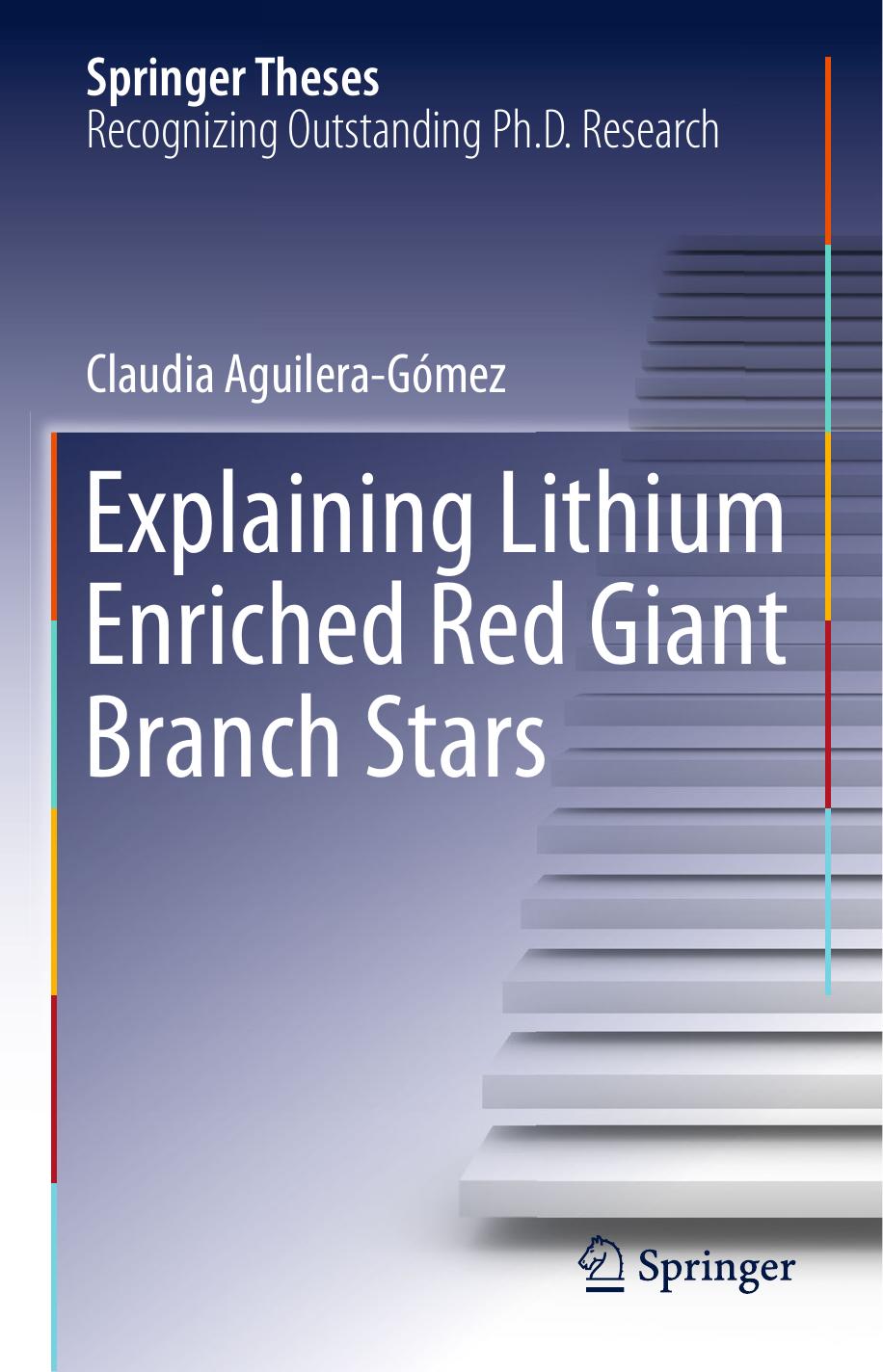Explaining Lithium Enriched Red Giant Branch Stars by Claudia Aguilera-Gómez

Author:Claudia Aguilera-Gómez
Language: eng
Format: epub, pdf
ISBN: 9783030025830
Publisher: Springer International Publishing
3.2.6 Other Observational Constraints
Discriminating between enrichment scenarios can be a difficult task, but other observational signatures can be useful. Beryllium is another light element that can be hard to measure, but that has been used to distinguish enrichment mechanisms. We include it in our models for a quick order of magnitude estimate. Assuming that a BD of 15 MJ with meteoritic composition (A(Be)=1.42, Lodders and Fegley (1998)) is ingested by the stars, in the best possible case, an abundance of A(Be) = 0.7 post-engulfment is found, with the abundance of the canonical star after the FDU being A(Be) = 0.6. This means that the increase in Be in the stellar envelope is very small. Melo et al. (2005) try to measure the Be abundance, finding that all of their giants, even if they have high Li, are extremely depleted in Be. According to their results, a giant with post-FDU abundance of A(Be) = −5.0, after accreting a SSC, should have A(Be) = −0.22, a signal Melo et al. (2005) indicate should be detectable. If the Be abundance in the canonical giants is as low as indicated in that work, every SSC could increase the Be especially those objects that can also increase the Li abundance, and the lack of Be in Li-rich giants would indicate that they must be produced by a different mechanism. If, on the contrary, stars could have higher Be abundances before the engulfment, the SSC would produce only a small, barely detectable signature on the final Be, being the final abundance very similar to an isolated giant.
A faster rotation has also been associated with Li enrichment. We compare our fraction of Li-enriched giants with the fraction of rapid rotators by Carlberg et al. (2009). Their sample of stars has an average mass of M = 1.1 M⊙, so to compare we use our modeled stars in the low-mass regime. With assumptions on the fraction of stars with planets orbiting them, the fraction of planets that could spin-up the star, and the RGB lifetime, they calculate a fraction of rapidly rotating red giants by engulfment of 0.53% to 0.58%. This fraction is lower than the fraction of enriched giants we find in that mass regime of 1%, but if rapidly rotating giants are able to slow down their rotation while retaining the Li in their envelopes, we could expect a lower fraction of rapid rotators than of Li-rich giants. Some of the assumptions used, such as the fraction of stars that have planets orbiting them in the MS, are somewhat different between works. Additionally, the lower fraction of rapidly rotating stars could be produced if the accretion of some SSC is able to increase the Li abundance without increasing its rotation rate.
Looking for correlations between Li enrichment and other signatures such as rapid rotation (Drake et al. 2002; Carlberg et al. 2012) is fundamental in finding if these giants could be explained by SSC engulfment. However, when working with such samples, stars with abundances higher than A(Li) ∼ 2.2 should be treated with caution as they are most likely produced by a different enrichment mechanism.
Download
Explaining Lithium Enriched Red Giant Branch Stars by Claudia Aguilera-Gómez.pdf
This site does not store any files on its server. We only index and link to content provided by other sites. Please contact the content providers to delete copyright contents if any and email us, we'll remove relevant links or contents immediately.
Tools of Titans by Timothy Ferriss(7815)
Turbulence by E. J. Noyes(7702)
Astrophysics for People in a Hurry by Neil DeGrasse Tyson(5002)
Secrets of Antigravity Propulsion: Tesla, UFOs, and Classified Aerospace Technology by Ph.D. Paul A. Laviolette(4994)
Design of Trajectory Optimization Approach for Space Maneuver Vehicle Skip Entry Problems by Runqi Chai & Al Savvaris & Antonios Tsourdos & Senchun Chai(4843)
Room 212 by Kate Stewart(4739)
Pale Blue Dot by Carl Sagan(4618)
The David Icke Guide to the Global Conspiracy (and how to end it) by David Icke(4381)
A Journey Through Divination and Astronomy by Publishing Pottermore(4250)
Apollo 8 by Jeffrey Kluger(3512)
Goodbye Paradise(3446)
Losing the Nobel Prize by Brian Keating(3425)
COSMOS by Carl Sagan(3348)
The Five People You Meet in Heaven by Mitch Albom(3335)
How to Read Water: Clues and Patterns from Puddles to the Sea (Natural Navigation) by Tristan Gooley(3240)
Brief Answers to the Big Questions by Stephen Hawking(3239)
How to Read Nature by Tristan Gooley(3079)
The Order of Time by Carlo Rovelli(3073)
A Brief History of Time by Stephen Hawking(2819)
